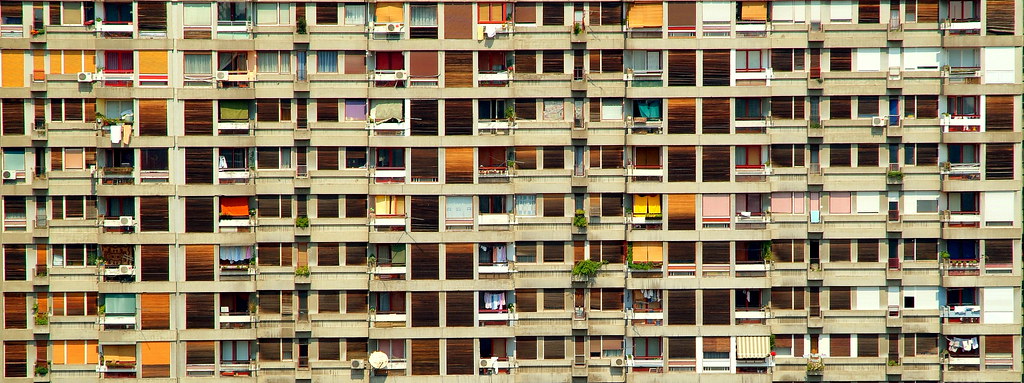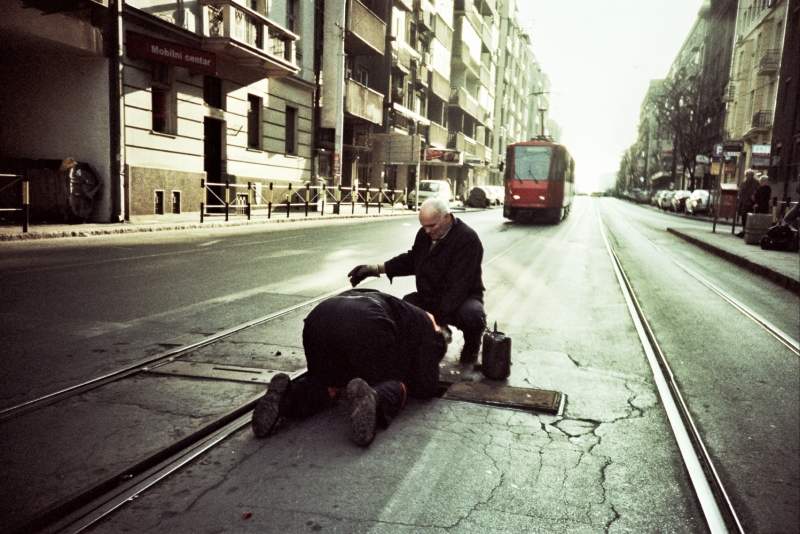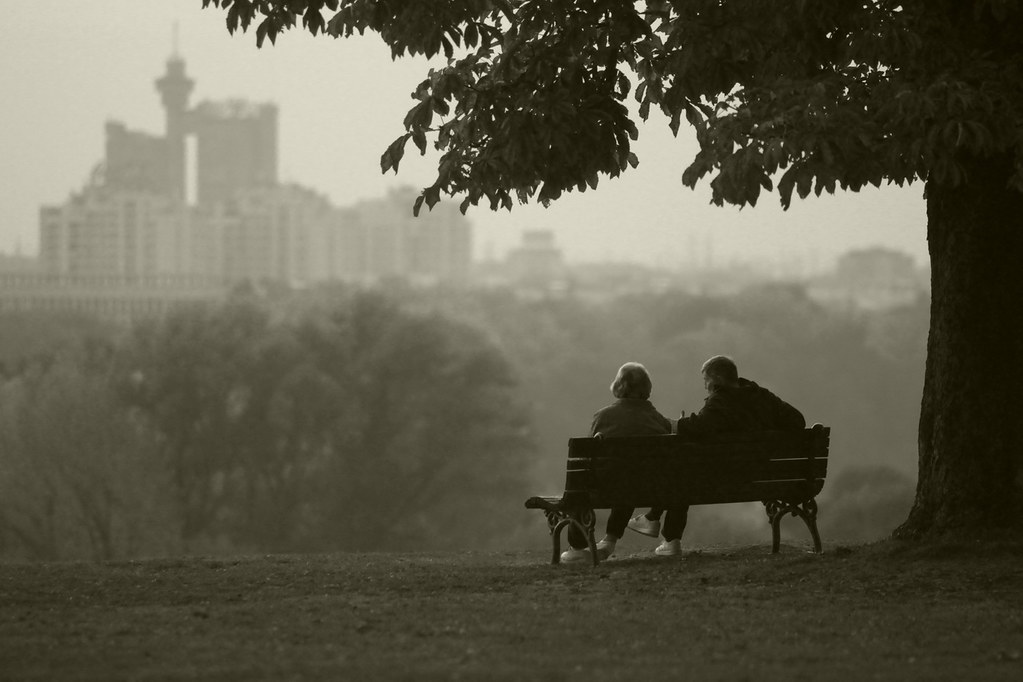BELGRADE — Seen from the West, Belgrade is a cliché, an illusion drawn from Emir Kusturica’s films. We can imagine that entertaining mix of trumpets, Kalashnikovs, drunkards, beat-up cars and geese walking through the middle of the living room.
In his films, the Balkan director gave his audience at the Cannes Film Festival what they wanted to see. This illusion was even easier to accept, seeing as Belgrade and Serbia do not reveal themselves easily.
Almost everything now, however, leads to think that the city has just woken up after a long, long period of numbness. The war and chaos of the 1990s was followed by an intense moment of democratic hope in the early 2000s. The entire society was bursting with new ideas and great projects, and Prime Minister Zoran Dindic was a smart academic and a well-respected friend of European leaders.
I had chosen to live in this contagiously intense breeding ground and work as a communications advisor for the first democratic Serbian government. These hopes and this dynamism were shattered on March 12, 2003, when Dindic was assassinated by those nostalgic for dictatorship. So I moved away.
It has taken Belgrade ten years to get back on its feet. Ten years during which its inhabitants survived a series of disillusions in a stalled economy. Today, somehow, everything seems possible again. People are just a bit more careful and cynical than they were ten years ago. But the economy is picking up and the city, partly thanks to the Russians, is renovating its facades and infrastructures.

Belgrade block — Photo: sima dimitric
Once a pariah, Belgrade is turning into a new Eldorado for artists and investors. This is why I decided to return here, partly out of weariness of the faux Swiss tranquility, partly because my fascination for this city never died. And I have not been disappointed.
The city centers of Prague or Rome are so idyllic and polished that they look like those cardboard cutout decorations in Las Vegas casinos. The Serbian capital does not have the immediately digestible and beautiful features of these cities that have glorious pasts and can be enjoyed in one weekend — thanks to EasyJet.
Because in Belgrade, there is no past. A tour guide is as useful here as an empty wallet in Saint-Moritz.

Working in Belgrade — Photo: rudlavibizon
Look harder
According to the generally accepted aesthetic criteria, Belgrade is the ugliest European capital. According to other criteria, however, it can also be considered the most beautiful European capital — even if I can't guarantee you won't be disappointed.
The area has been inhabited since the prehistoric times and has witnessed the Roman, Ottoman and the Austro-Hungarian empires come and go. Everything has to be imagined, because of an almost continuous series of ravaging conflicts throughout the 20th century.
The city is split by the two banks of the River Sava, which arrives from Slovenia and flows into the Danube in Belgrade. On the historic hill, south of the Sava, some charming remains are still to be found. But the most imposing of these palaces would pale into insignificance next to a Haussmannian building. The gigantic Church of Saint Sava, covered in white marble, is fortunately the only representative of the “Dubai-Byzantine” style. On the north bank of the Sava is the New Belgrade municipality, a flatland on which huge boulevards lined with miles of bleak low-rises were built during Tito's time.

The Church of Saint Sava — Photo: Nikola Smolenski/GFDL
Belgrade is elsewhere. Because years of isolation and scarcity had to have at least one advantage. For better and for worse, Belgrade is populated with people from Belgrade. They form the spirit and the beauty of their city. Stop a moment outside a middle-class building in the town center and read the names on the buzzers: There are only Petrovitches or Markovitches. What the large cities earned in cultural diversity and intermixing, they often lost in character. In Belgrade, this distinctive personality is still very present. And the residents of Belgrade are easily approachable and will be curious about you. Should they have studied in the past, they will answer you in a refined French. If not, almost everyone, from taxi drivers to students, waiters and bakers, speaks English.
Because the people of Belgrade love their city and are proud of it — but they also all dream of leaving it. They made out of Chicago the second most-populated Serbian city after Belgrade. They also form significant communities in Sydney, Stockholm, Zurich, London and New York. In this city where, according to official and quite incomplete statistics, the average monthly salary is 500 euros, and the unemployment rate is close to 20%, people are familiar with the whole of Europe, the United States and Australia.
Belgrade feeds off these intense exchanges and dreams avidly. Stuck in a still somewhat outcast city, Belgrade’s youth is scared of nothing. “I don’t have much to lose,” a 24-year-old photographer told me, smiling and explaining that he wanted to make a living from his art in London, where he has already exhibited. Whether they are violinists, programmers, engineers, dentists or dancers, Belgrade’s youth can be found around the world, often working at the height of their respective profession.
Many young foreign artists and entrepreneurs can also be found in Belgrade. They are attracted by the low cost of living, a growing market and a cultural life that has learned to get by outside institutions. They are able to enjoy Bob Wilson’s or Thomas Ostermeier’s latest shows, the stand-up comedy of an English comedian, a Pink concert — or a huge military parade in honor of visiting Vladimir Putin.
Dark humor
These exchanges are not new. While talking with retirees, I heard stories about Iran, China, Kenya, the United States and even North Korea, where these people worked for several decades in important positions. Those who came back formed the foundations of an emerging bourgeoisie. Those who stayed abroad developed the diaspora syndrome that can be found all over the world. It consists of compensating the sadness and the guilt of not sharing the misfortunes of the motherland with an even more nationalist and irredentist attitude than the Serbs of Serbia. In this way, the current pretender to the throne, Alexander II Karadordevic, is far more popular with his compatriots abroad than in Belgrade, where he’s considered a friendly but useless relic.

In a Belgrade park — Photo: serzhile
Because the Serbs, unlike the Swiss, for example, know exactly who they are and where they come from. They aren’t humble but they don’t stick out their chests either. When I pointed out to an elderly barber that the country seemed to be finding its way out of the crisis, he told me: “You know, sir, in Serbia, everything can always get worse.” This kind of folk wisdom can be found around the whole world, but in Belgrade, they are maybe more aware of it than anywhere else.
Of course, not every person in this cauldron of 2 million is friendly. Those who cut you off at 170 km/h on the city’s boulevards, those who shout instead of speaking, those who insult and throw stones at beggars — you can also find them in Belgrade.
And it’s a fact: People are not very polite here, and basic courtesy and smiling are not always the norm. But it allows Belgrade’s residents to hold on to an acute sense of spontaneity in all its forms.
This is exactly why Belgrade is one of the most exciting capitals in Europe. As the past and its aesthetic lessons are buried under the smoldering ashes of war, the present and the future still remain to be invented, with neither prejudice nor shame. This will be done by the people of Belgrade, with their dark humor, joy and generosity, extremely proud of who they are and aware of what they are not. It will be done around these countless terraces packed with Ottoman charmers, with the smell of grilled pepper when September arrives, of coal when it’s December’s turn, and in the scorching wind that blazes the streets in July. And the beauty of the women too ...





